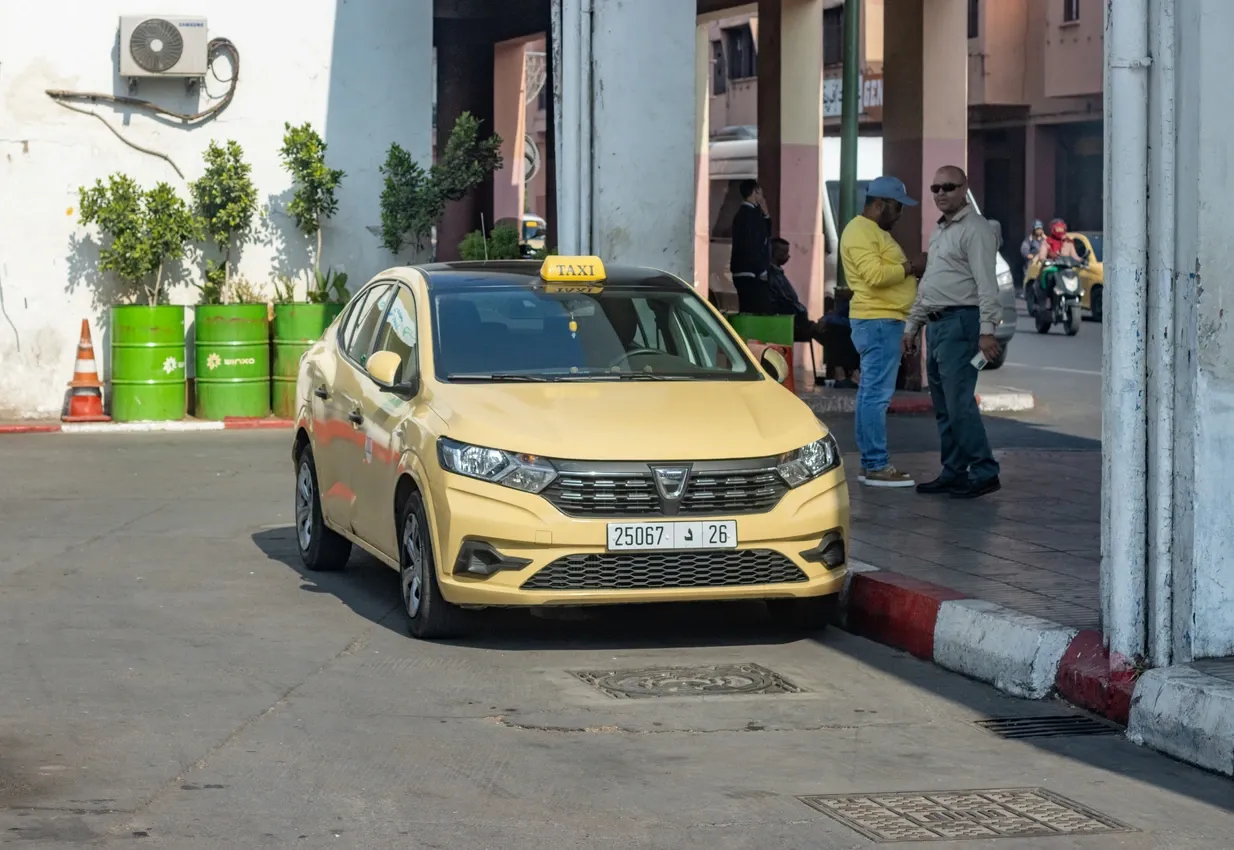The main means of transport in Morocco
The urban transport sector in Morocco is based on a variety of modes that coexist to meet the diverse needs of the urban population. Traditional solutions, such as shared cabs, sit alongside more modern initiatives like streetcars and hybrid buses.
These options reflect not onlygrowing urbanization, but also the desire to meet international standards for sustainable transport. It is in this context that mobility planning seeks to make travel more efficient.
Large and small cabs
Still very popular in the Moroccan landscape, large cabs are a traditional means of public transport. These vintage Mercedes-Benzes criss-cross the city's roads, often on a cost-sharing basis. At the same time, small green or red cabs provide fast, direct journeys in inner-city areas.
Although efficient, these means of transport raise questions about their sustainability and safety. Modernizing them remains a major challenge for local authorities, in order to improve the user experience while meeting current environmental expectations.
Streetcars and buses: modernity at work
In recent years, several Moroccan cities have been equipped with tramways, Casablanca being a pioneer with its network commissioned in 2012. This modern mode of transport offers a fast, environmentally-friendly alternative, helping to relieve congestion on the main arteries.
Buses, meanwhile, have undergone a wave of modernization. Vehicles equipped with the latest technology provide comfort and safety for users. Urban governance is relying heavily on these infrastructures to help structure urban growth while respecting the sustainability of transport.
The impact of growing urbanization
Withrapid urbanization, the demand for public transport continues to grow. This urbanization calls for a rethinking of mobility planning to efficiently manage the daily flow of millions of users.
The challenges associated with this phenomenon include traffic congestion, pollution and a lack of suitable infrastructure. Authorities are therefore investing heavily to develop innovative systems that meet global ecological and economic standards.
Urban planning and infrastructure
The success of urban transport depends to a large extent on judicious infrastructure planning. New streetcar and bus lines, as well as cable car projects in certain regions, illustrate this need to decentralize and fluidify traffic.
Particular attention is paid to the networking of urban transport networks, enabling easy interconnection between different modes and avoiding long waiting times. These efforts aim to encourage the use of public transport by making it more competitive with the private car.
Strategies for improving sustainability
- Adoption of electric and hybrid vehicles to reduce carbon footprint.
- Development of bicycle paths and encouragement of bike-sharing.
- Raising awareness of the benefits of carpooling to reduce the number of vehicles on the road.
- Implementation of intelligent traffic management systems to optimize the flow of urban traffic.
The role of urban governance in transport improvement
Urban governance plays a crucial role in the development and implementation of urban mobility policies. It appears to be the pivot around which strategic decisions concerning the infrastructure and provision of transport services revolve.
Cooperation between local players
A fundamental element in the successful transition to more efficient urban transport is cooperation between municipalities, public and private companies, and citizens themselves. This synergy enables better articulation between the different forms of mobility available.
In this respect, government bodies need to promote partnerships with the private sector for optimal financing and rapid deployment of new infrastructures. An appropriate legislative framework also facilitates their implementation.
Incentive and educational policies
Incentive policies are an integral part of the transformation of the urban transport system. These include subsidies for innovative technologies, and discounts for those opting for a public transport season ticket.
Similarly, sustainable mobility education and awareness-raising play an essential role in changing user behavior. Investing in communication campaigns helps raise collective awareness of the need to use environmentally-friendly means of transport.
FAQ on intra-urban transport in Morocco
What are the main challenges facing urban transport in Morocco?
Key challenges include traffic congestion, inadequate transport infrastructure, air pollution, and the integration of technologies for sustainable mobility. Urban governance must juggle the growing demands of accelerated urbanization with innovative solutions.
How are transport infrastructures being improved in Morocco?
To improve transport infrastructure, Morocco is investing in modern tramways, upgrading bus networks and creating new cycle lanes. The aim is to provide integrated and efficient urban mobility solutions, taking into account environmental imperatives.
What role is technology playing in the evolution of transport in Morocco?
Technology plays a key role in the modernization of transport in Morocco. Whether it's the introduction of mobile applications to track timetables and routes, or the use of more environmentally-friendly vehicles, technology is fundamental to organizing and optimizing urban travel and improving the user experience.
What initiatives are promoting sustainable mobility in Morocco?
Several initiatives support sustainable mobility, including the adoption of electric vehicles, the development of bicycle paths, and the promotion of public transport. Awareness campaigns also play an important role, encouraging citizens to adopt more environmentally-friendly travel practices.

